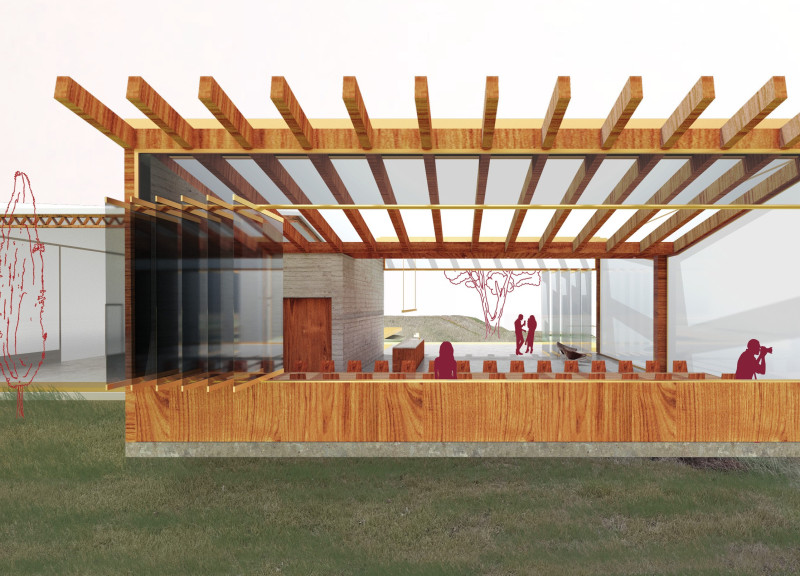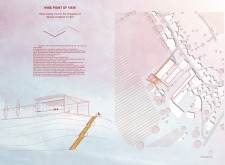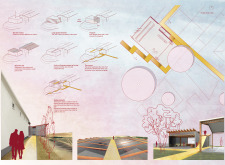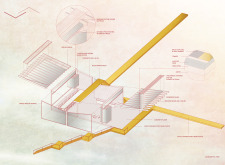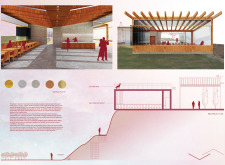5 key facts about this project
The primary function of the architectural design revolves around wine tasting, community interaction, and educational opportunities regarding viticulture. The structure is positioned strategically at the edge of the vineyards, maximizing views and creating an immersive space that highlights its natural surroundings. Visitors are encouraged to move through the site, fostering a sense of journey as they reach their destination.
The design employs a number of unique approaches that distinguish it from typical wine tasting facilities. First, the integration of large glass facades allows for seamless transitions between the interior and exterior spaces, enhancing the visitor experience through natural light and scenic views. The reversed roof structure is particularly notable, as it not only provides architectural interest but also opens up landscapes for observation while allowing daylight to penetrate into deeper areas of the space.
The material selections further differentiate this project. Concrete is utilized for structural elements and flooring, ensuring durability while complementing the natural textures found in the region. The use of wood in structural and interior finishes adds warmth to the setting, fostering a welcoming atmosphere. Additionally, the use of gold-painted epoxy resin in flooring reflects light and enhances the overall elegance of the design.
Important architectural elements include the sliding doors and mechanical shading systems, which facilitate adaptability to varying environmental conditions. This allows for greater comfort and interaction with the surrounding landscape. The overall spatial organization promotes flexibility, accommodating various events and gatherings geared towards wine tasting.
The project emphasizes accessibility and engagement with the landscape through well-designed pathways that lead visitors to the entrance. The gold-painted decking serves as a communal space, further enhancing social interaction among guests. By focusing on these design strategies, the architecture not only fulfills its intended function but also cultivates a relationship between the visitors and the vineyard.
For further insights, exploring the architectural plans, sections, and designs of the wine tasting room will provide a comprehensive understanding of this project and its innovative approach to blending architecture with viniculture.


